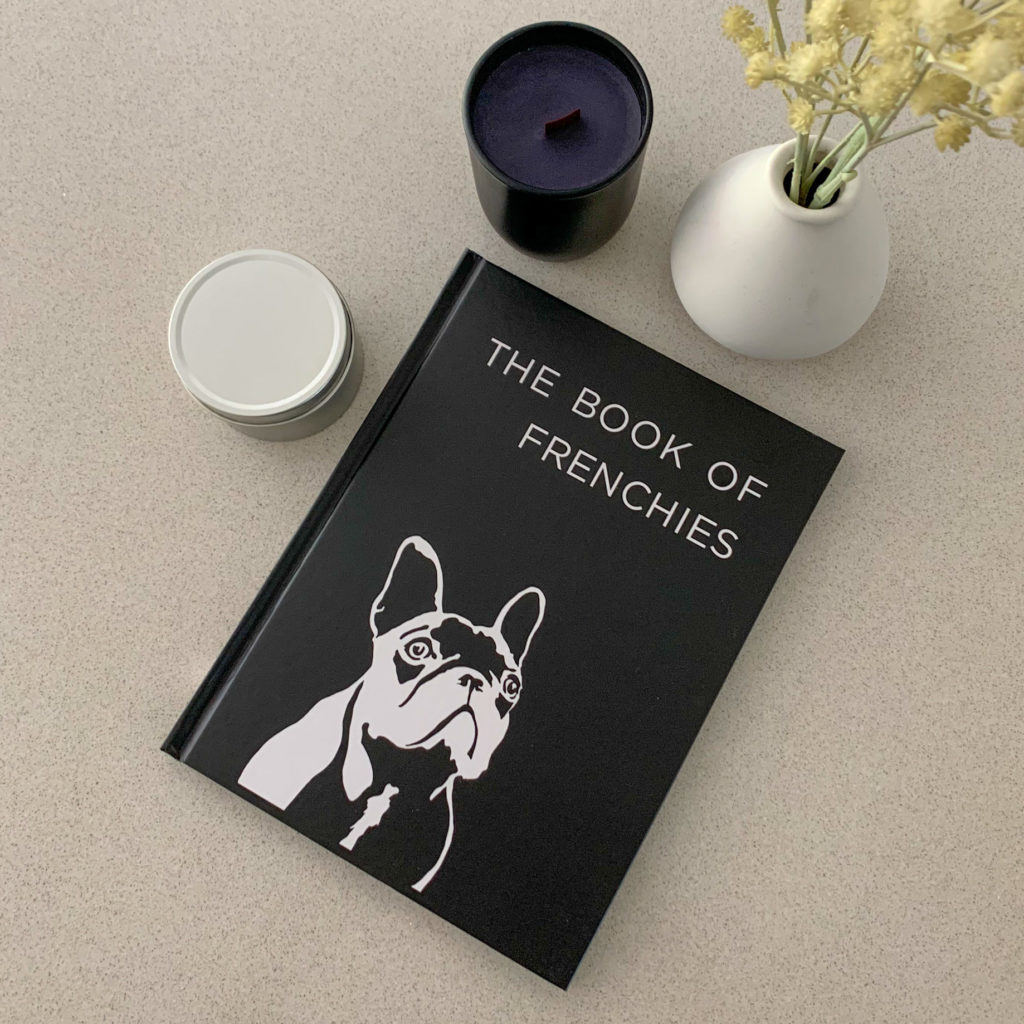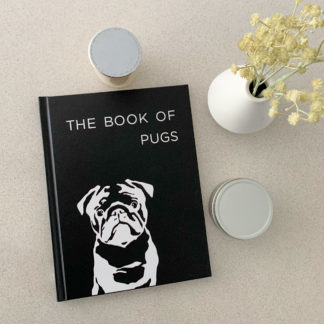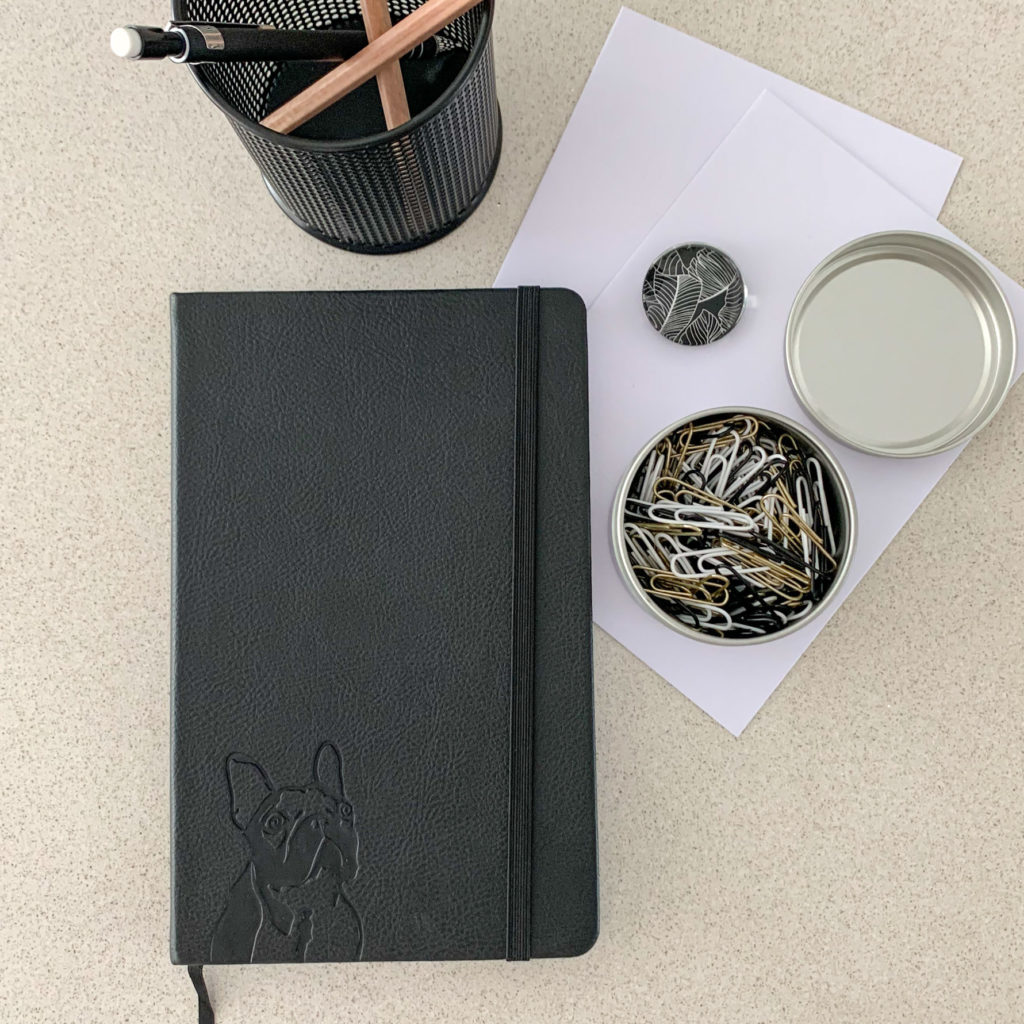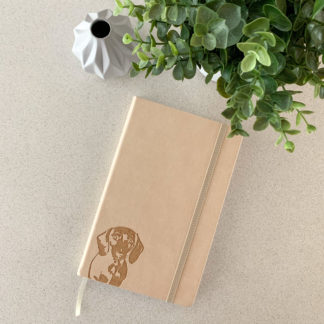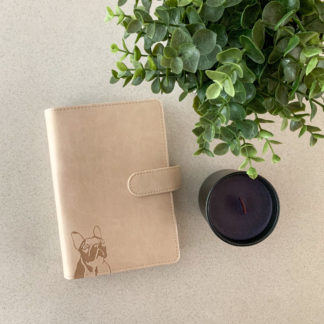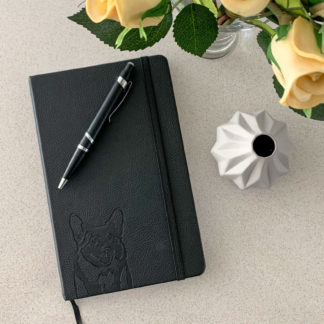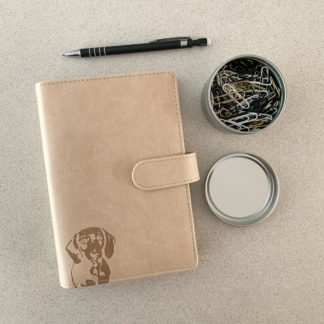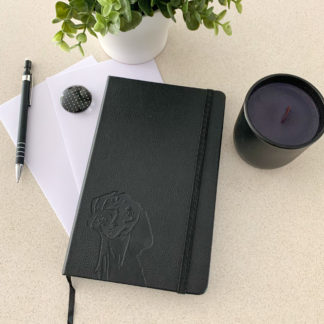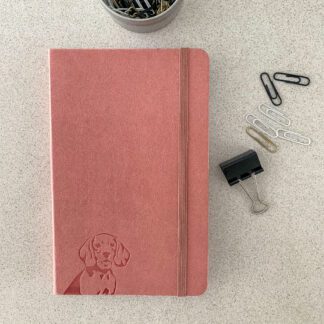
Do you know the ingredients that are in the products you use for your dog? Could some ingredients be harmful?
This episode of The Dog Show features Millie Hooper, the Founder of Sydney-based dog business Hooper Ruff.
Hooper Ruff creates a range of unique and naturally produced dog products, such as dog wash, soap, and homemade treats.
Millie’s mission with Hooper Ruff is to increase awareness among dog owners about the ingredients that go into dog products – the good, the bad, and the potentially harmful. Follow Hooper Ruff on Instagram and Facebook.
Listen
Watch
Read
Will: In this episode of “The Dog Show,” I speak with Amelia Hooper, the founder of Sydney-based dog business Hooper Ruff. So Hooper Ruff creates a range of unique and naturally produced dog products such as dog wash, soap, and homemade treats. Amelia’s mission with Hooper Ruff is to increase awareness among dog owners such as you and I about the ingredients that go into the products that we buy, the good, the bad, and the potentially harmful. She shared some great tips in the interview about what you can do when you’re looking for products, how to avoid harmful products, and how to choose the ones which will benefit your dog’s health. I certainly learned a lot from the interview and I hope you do too. Amelia from Hooper Ruff, thanks so much for coming in and being on the podcast today.
Amelia: Thank you very much for having me, Will, very excited.
Will: You’re welcome. So do you wanna start with a bit of a background with your history with dogs and how you got into this industry?
Amelia: Yes, yes. I grew up on a farm, always had dogs growing up, every animal on a farm actually. And as you know, growing up with dogs as a kid, they just sit with you all the time, you create these amazing great memories and you just end up buying more dogs as you get older and you can’t live without them. And I think that that is something for me, they’ve always been a big part of my life and you always want to have the best for them. So that’s how Hooper Ruff started about two years ago.
I moved to Sydney and I realized there was a big gap in the market and I really wanted to create something for dogs that was natural and had lots and lots of benefits. So that’s when I came up with the idea of creating those products and making sure that I was educating people along the way as well because the skin is the largest organ of the body and it’s also absorbent, so it’s really important to understand what you’re putting on it and what’s going into your skin and what’s being absorbed.
Will: Okay. So we’ll get to the ingredients about the products you have in a moment but just jump back one second, what type of dog did you have when you were growing up for the farm?
Amelia: This is really weird. So we had shar-peis.
Will: The wrinkly dogs.
Amelia: Yes, you know, the toilet roll dog with all the rolls, that’s a shar-pei. So quite an odd dog to have on a farm in Tasmania, but we did have other dogs growing up as well. So luckily we had other dog breeds like we had kelpies. I remember I had a staffy at one point called Btter. So just a very eclectic mix of dogs.
Will: I guess the shar-peis would have had potentially some skin irritations and stuff from the rolls that could have led you down the path of wanting to know more about the ingredients.
Amelia: Massively. So how we got talking about your dog and your gorgeous little French bulldog, they just have skin problems and you spend so much time and money and energy and back and forth with a vet trying to figure out what to do and what the cause is that it would just be so much easier if these products were available and I think the shar-peis having the skin issues really triggered me when I started these two main products that would be good for them.
And I think I always had that in the back of my mind looking back as a kid and seeing how, you know, sore they were and unhappy they were and your heart does bleed for them because, you know you, love them, you don’t want to see them like that, you want to see them fixed and so it was a big motivator for me to tackle that.
Will: Our Frenchy has irritations at the moment, I’m not sure if it’s the time of the year when she always has some sort of skin irritations going on, but it’s just a constant battle with getting to the vet, treating the symptoms and then changing the lifestyle, the diet, the products you use, all sorts of stuff like that.
Amelia: Did you find it was expensive to do and just really time-consuming?
Will: To identify what the issue was?
Amelia: Yes.
Will: With skin and I’m not sure if it’s the…it’s probably not the same with all dogs, but our dog has allergies, right? And you think, okay, allergies, you know, they might get irritation in one spot of their body, but it turns out it could pop up anywhere. She’s had ear infections, issues with her pores, issues with other parts of her skin, exposed skin on the body, even in the wrinkles on the face and the eyes and it’s all related to the allergy she has to the environment and the food she was eating at the time.
Amelia: So I think it’s really important, I think that we’ve evolved as in the last 10, 20 years with how we live with our dogs. So I think that we’re living in apartments more, especially in cities, and I think that they’re a really big part of our lives now. And I think that because they’re more integrated, we’re seeing a lot more of these things. Well, I think they’ve always been there, obviously like 20 years ago, I was noticing it on my shar-peis.
But I just don’t think we’ve had the products to deal with it and to really suit their skin type, their lifestyle and just to really hit the nail on the head as to why they’re having these problems. And to also stop, like the thing you want is you want to be able to identify this stuff really quickly and hit the nail on the head. Otherwise, like you said, like you’re back and forth, you’re spending a lot of time and energy changing diet and, you know, making food and things like that.
Will: Okay. We can get back to Hooper Ruff now. So you mentioned something about a gap in the market or dog products and people not being quite aware about all the things that are in dog products and what they should know about. What is it about the ingredients in dog products that you think is so important to owners?
Amelia: I think it’s something that we’re just not aware of and I think that there are so many things that we should be…I don’t know if you know this, but the skin is actually the largest organ on a dog. So when you take into consideration that it’s also quite absorbent and it’s the way that…it’s, you know, all the hair follicles and everything, obviously linked to their skin, and that’s got a cycle and it’s fine just like our own hair and skin and the products that we use. Dogs are the same, so understanding what’s important to go on their skin and what’s absorbing into their skin will actually save you a lot of money on vet bills.
And like I said, I just don’t think that it’s a regulated industry, I don’t feel that we’re getting enough education on it and it’s something I’m really big about starting Hooper Ruff is actually just educating people on that, not trying to flog a product. So to really break it down so everyone can understand, I feel that it can get so technical and to just really keep it basic and simple when you’re shopping, there’s some really great things that you should look out for.
If you can’t pronounce the name on the back of the ingredients, don’t buy it. So I find that when I don’t know what things are, I’m like maybe it will be okay and then I look at how pretty the packaging is and how much it is and then I sort of weigh my options. It’s very much the same with dog products, so if you can’t pronounce it, just don’t buy it. Like look for natural ingredients, look for things that you know what they are. One thing that is really important is actually using a wash that’s pH balanced for dogs. So dogs are at about 6.5 or 7.5 and humans are around a 5.5, so there is a difference.
Will: Sorry, kind of lost you there. I’m not a scientist. pH is…
Amelia: pH is important.
Will: pH is important, and if I can’t pronounce it, don’t buy it. It’s funny because if I’m looking at any product, dog product, human product, I have this probably false trust in the fact that there would be regulations because the product looks nice and it looks like it’s a sophisticated company then it’s going to be healthy, right? But that’s not the case.
Amelia: I have found like…I don’t know if you had a look at there was a case a few years ago with Johnson & Johnson. They were putting something in that was not very good in their products and it was actually something that was a cancer-causing agent. And they had a huge recall and it was actually quite large. So these are brands that you and I use and people use on their babies and we have this like huge brand trust. I’m not saying that this was something that happened in the dog world, but I’m saying that in such a regulated industry like for humans that this stuff still happens.
And then in the dog world, there’s just no real regulations and a lot of these elements or chemicals are slipping into these products and they’re allowed to and it’s okay, no one’s really kicking up a stink. And I really do think that as pet owners integrate their dog more into their lifestyle, it becomes more of a family member that we’re really going to start caring what goes on them. And we’re also going to want to just be bringing down those vet bills as well.
Will: So apart from the deadly things, the cancer and things, are there other symptoms that owners might notice which are the cause of some of these ingredients?
Amelia: Yes. So I’m sure there’ll be a few listeners that have, unfortunately, had to go to the vets over some of this stuff. So dogs can actually have allergic reactions to some of these chemicals, especially if they’re in higher volumes in dog wash and sometimes it can actually be really hard for you to identify that. So some things can bring on an allergic reaction, some things can actually just make your dog really, really sick. So they’re not feeling well, they’re dizzy, they’re having sort of more dehydrated symptoms, but they’re not really dehydrated, they’re off their food, some of these ingredients because they’ve been absorbed into the skin as a wash, they can actually long-term affect their organs as well.
So there’s things in there that just have a short-term side effect, but also some really long-term issues as well. And of course, we do a lot more research on humans in that area. However, if we’re putting these products on our dogs, they’re going to have the same side effects as well long-term. So we don’t want to be spending more time at the vets especially when they get older. So investing in really looking into what’s on these products is important.
Will: I know it also. I’ve have a French bulldog and we’re regularly at the vet for skin issues and allergies and things like that. Interesting, this is probably more of a personal question, how often should you be washing your dog?
Amelia: So this is a really funny one, it’s a tricky one because everyone has an opinion. It depends on your…I base it off…I’m a bit odd. I base it off of what’s best for your lifestyle and your dog’s lifestyle and no one knows your dog better than you do, which is why everyone has an opinion. So you know when they’re ready for a bath, just like you would if you have a child, you know when you’re ready for a bath. I feel the same about a dog, you are with this dog as part of your house, you know when to bath it, what the best time is to bath it, especially when they’re getting a bit [inaudible 00:11:48], I mean that’s the big indicator, right?
Apartment living has seen the a rise and smaller inner suburb living as well so, you know, smaller, confined spaces, you know, you’re looking at subdivided townhouses and things like that. You’re finding that people are washing their dogs more regularly because they’re in the house a lot more so you’re wanting to find product…
Will: Sleeping on the bed.
Amelia: Yes, in bed, on the pillow, on the covers. Apartment living is seeing the rise of people wash their dogs more regularly because they just don’t want their really expensive furniture to smell terrible, that’s really what it comes down to. So you’re going to see the rise of more washing but what that means is that we’ve got to now create products that aren’t going to be damaging the dog’s skin as much, that you’re still getting a really good wash and you’re removing that element, but they’re still able to have what they need for their skin and their fur or their coat. So we need to look into formulas that are going to suit our lifestyles, basically.
Will: Okay. So we’ve spoken a bit about bad ingredients, like what to watch out for. What are some of the good ingredients that go into products? And one thing I found on your website, which I thought it was amazing, it was transparent and it was also really helpful for me as a dog owner, was the list of ingredients that you use in your products. What ingredients are you using and should people look out for that are actually beneficial to their dogs?
Amelia: Yes. So anything that you know what it is on a bottle is a really good indicator that it’s good for your dog. So coconut oil is really good, any oils really that, you know, that you know in your skincare products like olive oil, even like palm oil, obviously sourced properly, you know, things like that are going to be good for your skin in the right formula. So, you know, that’s a big green light. For me personally, I put things in the products and obviously explain it on my website. Sodium chloride is a fancy word for salt, so salt in the right quantities will actually get rid of dead skin cells. And so when we’re talking about that gentle wash that we want to give the dog because we’re bathing them a little bit more regularly now, that’s something to look out for.
Salt is also one of those wonderful ingredients that can actually thicken a product. So when you’re using a lot of those coconut oils and those natural ingredients, which we’re all going, “Oh, this is really good and I want to put this on my dog because I know it’s going to have good benefits,” when you want the recipe to be a little bit thicker, otherwise, you’re going to think when you’re buying it, then you’re not getting like your value for money because you’re seeing that it’s a bit too runny like most oils are, right? So salt is one of those really good things to sort of thicken a product to give it that liquid soap consistency. And another one that I really like is bicarbonate soda.
Will: [crosstalk 00:14:46.778] in cakes, doesn’t it?
Amelia: It does. So bicarb is one of those things that sit in the kitchen and I’m sure it’s in everyone’s pantry and no one really knows what to do with it, but mom or dad had it at home and, you know, your grandma definitely does, so you’ve got to have it too. But it has so many purposes. It can actually be used as a cleaner, people actually dilute it and drink it. So more for internal gut health and things like that. It’s used in cooking and baking. It’s also a really good, not just like a cleaning agent for around the house, but also it can be used in shampoos and conditioners as well.
So I use a little bit of it in my products basically to stabilize the product to bring down the pH level, because we talked about dogs needing a certain range to have healthy skin. And so it does that but it also just is a beautiful cleaning agent and it’s really gentle and mild and I love that it does that for dogs. It also is a good little anti-flea-and-tick ingredient as well. So I love it. So it’s one of those things that if you’re adding it in, it just gives you a little bit of a boost when they’re running through the grass and things like that. So it’s one of those things that is just, for me, an ingredient in all our pantries that we know has…
Will: [crosstalk 00:16:18.203] So bicarb soda, the salt as well, and oils, essential oils or coconut oil, olive oil, those types of things. If anyone wants to see any more ingredients that are in your products, you need to check out the website, right?
Amelia: I think looking at brands that are really upfront about the ingredients and will tell you why they’re natural and how is really important. So don’t be afraid to pick up another bottle when you’re shopping and actually turn it over and go, “Well, I’m not too sure about that. I’m just going to pick something else up that I feel a bit more comfortable with.” And have the idea of like, would you use it? When you’re buying, just think about if you would use it. So what ingredients are you looking for? And then just change it over to your dog, what characteristics you’re looking for.
Will: So based on what we’ve spoken about here, I think the way I’d go about it, number one, I’d read the ingredients that you’re using on your website because you’re obviously very deliberate about that. But if I’m just shopping in a pet shop or whatever, or online, if I don’t understand what it is, I’m probably going to google it to try and understand more about it and I’m going to look out for some of the ingredients that I do recognize, such as your salts and the olive oils and other oils, which sound like they’re beneficial.
Amelia: Yes. So another one to touch on with dog products, and this one’s a really big one because it can actually make your dog quite sick, is fragrances. So essential oils are obviously derived from plants and flowers and leaves or extracts from those things. They can also be created synthetically, so a lot of dog products are actually using synthetic scents or fragrances. So when it says the word fragrance, and this is something that I’ve been using interchangeably and I shouldn’t because I buy really expensive essential oils…and this, again, it’s just an education piece, right? Like, how did I know that a fragrance didn’t mean fragrance? It’s actually a word for a whole bunch of blended products that you don’t know what’s in it.
Will: It’s kind of like an artificial fragrance.
Amelia: How do you know that and how do you see it interchangeably?
Will: It sounds like a natural term.
Amelia: It really does. It’s easy how such innocent stuff, in the marketing especially, can get so lost. So anyway, so these dog products aren’t using essential oils because they are expensive and you have to stabilize the formula better and they can be really deadly for your dog. They can actually make your dog really crook, especially if they’re not in the right dosages, and you just don’t know the breakdown and the cosmetic makeup of them either. So that’s a worry.
Will: Definitely. Good to know that. Good to know. So you’ve already probably spoken about this quite a bit, is there any mistakes you say dog owners make? I guess it’s just using cheaper products which have all of those ingredients that you’re talking about.
Amelia: This is one really grinds my [inaudible 00:19:04] because there’s one thing I’m going to mention out of a long list, cat and dog wash.
Will: Combo wash.
Amelia: It really irritates me.
Will: I wouldn’t buy anything with cat on it anyway.
Amelia: [crosstalk 00:19:24.346] It really irritates me. It’s just marketing at its best. And it just really…like I said, it just really grinds my [inaudible 00:19:35]. Cats are completely different animals to dogs. Like, how can we get this so wrong and yet people are buying it and they’re thinking they can use it on both animals? Felines have a completely different makeup when it comes to their own skincare needs compared to what dogs do. So what is it in the product that they’re trying to say is actually beneficial for both?
Because there’s no formula that’s actually going to work for both, they’ve both got different needs. Cats are definitely really susceptible to some ingredients that could make them quite sick, end them up at the vet, whereas those ingredients might be fine for a dog and vice versa. Like your dog could actually end up at the vet and your cat will be fine from using that wash. But there are just so many things that each animal can’t have or use or have as an essential oil or a scent. So some things that will be fine for a dog will actually make a cat really sick.
Will: So stay clear of cat and dog products.
Amelia: So if you’ve got a dog, don’t buy anything to do with cats and vice versa, just stick to your animal category. But anything that’s a combo, I am really against it. That’s where I draw a line in the sand and I’m really vocal about it because it’s just opening a can of worms. It just really [crosstalk 00:20:58.931].
Will: Well, it’s obviously not tailored to…
Amelia: Anything.
Will: …benefit your animal, right, if it’s meant to be for a whole bunch of different animals.
Amelia: It’s like saying, “This wash is really good for humans and elephants.” Like, you’d think it was a bit odd if, you know, there was a wash that said…
Will: Humans and horses or elephants or whatever it is.
Amelia: You actually think that the product wasn’t good enough for you and that is exactly the same mentality we should start getting into for our dogs, you know, cat and feline wash or a human and giraffe wash. Like you’d be like, hang on a second, why are we washing giraffes with the same [crosstalk 00:21:34.422] as myself? Yeah. It does not make sense, it’s ridiculous.
Will: It’d be quite a funny commercial or something, like giraffe and human.
Amelia: You’d definitely be listening, wouldn’t you?
Will: So if you had to leave listeners with one big takeaway from today’s chat about dog ingredients and what they should be looking out for, what would that be?
Amelia: One tip I would love to offer your listeners is that when you do take your dog to the dog groomers, I would highly recommend asking them what they use. You’re spending a lot of money for that service and your dog is going to come back looking amazing, however, you really want to be making sure when you’re outlaying so much money that you know what’s going onto your dog’s skin and into their fur or their coat. So it’s actually really important when they’re getting such a good clean and a runover of the clippers. Don’t be afraid to ask your groomer what they’re using and don’t be afraid to ask what the ingredients is because they are going to be going there quite regularly. Most people won’t steer away from a groomer once they’ve picked one. So be really sure of what they’re using.
Will: That’s great advice. We don’t actually go to a groomer but, you know, maybe in the future. I guess what typical breeds would go to groomers more so than others, do you think?
Amelia: It’s really interesting. So different suburbs actually have different dogs that are popular. So most dogs will go to the groomers at some point, especially if they’ve got medium length to long hair just because it’s…I don’t know, have you…I don’t know if you’ve ever had a dog with longer hair or medium length hair.
Will: I had a labrador when I was growing up, it’s still short hair, isn’t it?
Amelia: It just gets everywhere and they just need to be cleaned up every now and then have the clippers and everything done.
Will: They can get tangled and all sorts of stuff.
Amelia: So it’s so much easier to plum that off to someone else, especially in summer.
Will: So where can people find more about Hooper Ruff?
Amelia: Okay, so you can head over to our website, so hooperruff.com. We’re building a dog following, a dog cult following on our Instagram and Facebook.
Will: Which is how I found you.
Amelia: It’s how I found you. Facebooks are amazing, they’re so gorgeous. So Instagram is where our followers really are and they can keep up to date with our journey and what we’re doing and see what other great products we have on the horizon.
Will: Perfect. I’ll share both of those accounts in the show notes.
Amelia: Perfect.
Will: Thanks a lot for today, Amelia, it was really good to meet you.
Amelia: Yeah, nice to meet you too.
From Our Store
-
French Bulldog Coffee Table Book – The Book of Frenchies
From: CAD $53.81 Add to cart -
Dachshund Coffee Table Book – The Book of Dachshunds
From: CAD $53.81 Add to cart -
Pug Coffee Table Book – The Book of Pugs
CAD $53.81 Add to cart -
French Bulldog Notebook – A5, Hardcover, PU Leather, 100gsm Lined Pages, Bookmark (Three Colours)
CAD $31.39 Select options -
Dachshund Notebook – A5, Hardcover, PU Leather, 100gsm Lined Pages, Bookmark (Three Colours)
CAD $31.39 Select options -
Pug Notebook – A5, Hardcover, Black PU Leather, 100gsm Lined Pages, Bookmark (Three Colours)
CAD $31.39 Select options -
French Bulldog Planner – PU Leather Exterior, Metal Loose Leaf Ring Binder, 100gsm Paper (Two Colours)
CAD $58.30 Select options -
Corgi Notebook – A5, Hardcover, Black PU Leather, 100gsm Lined Pages, Bookmark (Three Colours)
CAD $31.39 Select options -
Dachshund Planner – PU Leather Exterior, Metal Loose Leaf Ring Binder, 100gsm Paper (Two Colours)
CAD $58.30 Select options -
Vizsla/Weimaraner Notebook – A5, Hardcover, PU Leather, 100gsm Lined Pages, Bookmark (Three Colours)
CAD $31.39 Select options -
Cavoodle Notebook – A5, Hardcover, Black PU Leather, 100gsm Lined Pages, Bookmark (Three Colours)
CAD $31.39 Select options -
Beagle Notebook – A5, Hardcover, PU Leather, 100gsm Lined Pages, Bookmark (Three Colours)
CAD $31.39 Select options

